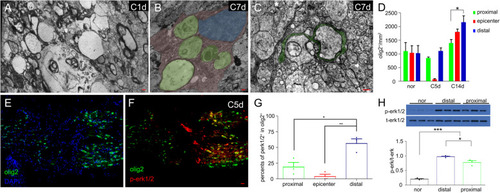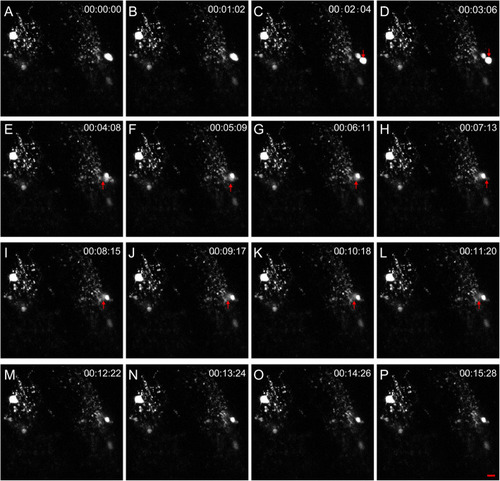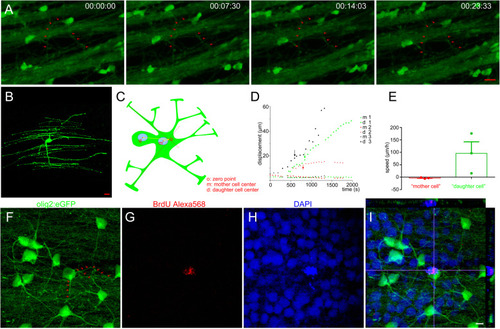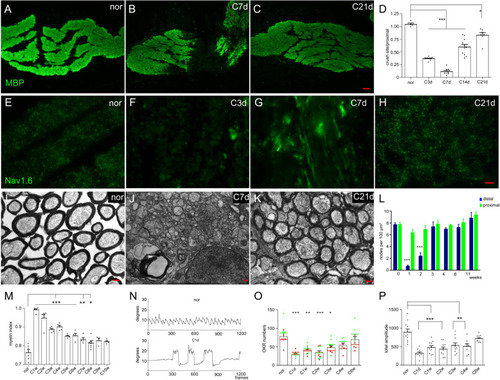- Title
-
In vivo imaging reveals mature Oligodendrocyte division in adult Zebrafish
- Authors
- Zou, S., Hu, B.
- Source
- Full text @ Cell Regen (Lond)
|
Oligodendrocytes survived after optic nerve injury. |
|
mOLs from donor adult zebrafish rewrapped axons in the host fish at 3 mpt. |
|
Imaging proliferation of local oligodendrocytes in the transplanted optic nerve. Two olig2+ cells in the transplanted optic nerve project their processes to large areas, suggesting that they are complex oligodendrocytes. At 1 min 2 s, olig2+ cell division was not observed. At 2 min 4 s, a new olig2+ cell was divided from one olig2+ cell, and the whole progress was completed within 1 min. The newborn olig2+ cell migrated to the right at 3 min 6 s (descending arrow) and then migrated into the deeper space from 4 min 8 s to 11 min 20 s (ascending arrow). Finally, the cell migrated out of focus at 12 min 22 s. Each image has 25 optic slices, the interval is 1 μm, and the scale bar is 10 μm |
|
mOLs within the retina are divided in an asymmetric manner. |
|
Visual function recovery after the completion of remyelination. |





